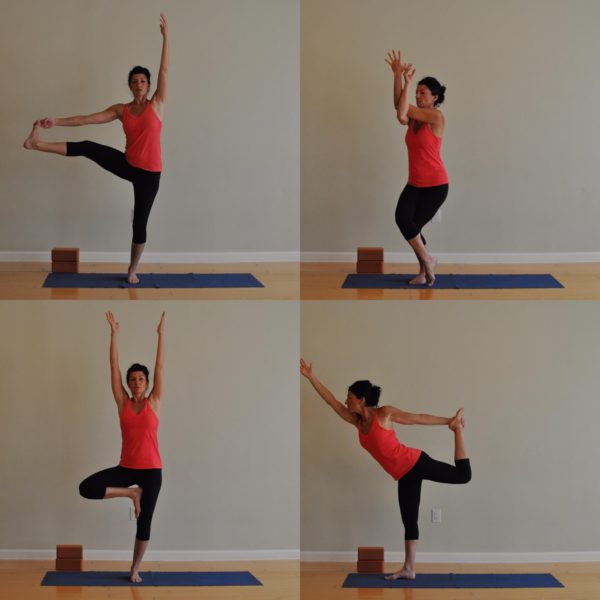
Sometimes after class, students will approach you with questions about different aches, pains and sensations they feel in their body when they practice. Sometimes, the aches and pains actually come up when they’re doing something else and yoga makes it feel better so they’re curious about what “it” could be.
I like to approach these questions in partnership with the student rather than trying to just answer their question and send them on their way because quite frankly, I’m working at a disadvantage to truly be able to answer their question. Sure I have anatomy and yoga knowledge but as a non-physician and without the benefit of an exam, X rays and other diagnostic tests, it’s quite difficult to give them a definite answer.
However, there is quite a bit we can do together and the first take-away is to give the student some homework: a short sequence they can do at home, daily, which might help them hone in on the issue. Here’s an example.
I had a student the other day approach me after class. I knew from watching her during class that she was newer to yoga. She said she had a pain the front of her hip that she felt was related to her running. I asked her a few questions and the overall impression she had was that it was related to running, it was a tight feeling versus a feeling of a loose hip, she did not feel it during the day or during yoga practice, but only running. She felt better after the class and felt that the yoga poses helped it somewhat.
My approach, once I go through my list of standard questions, was to share with her some of the musculature that is in that area. We talked about the psoas, the rectus femoris, the other 3 heads of the quadriceps and the gracilis. I shared with her something that students often forget, which is it’s hard to pick just one muscle that might have an issue as so many muscles contribute to movement. If we just think of the repetitive nature of running and the non-stop hip flexion, we immediately think of the contribution of both the psoas and the rectus femoris. So right there, we’ve got two different muscles that both contribute to that action.
Further, at first impression, it’s hard to say if the issue is the muscle is too tight or too weak. Most students want to “stretch” a muscle that’s giving them issues but it’s hard to know without further testing at which end of the spectrum lies the problem. Also, it could be that’s a combination of both or just an overuse issue. Certainly running injuries can fall into that category because running is basically the same movement throughout the whole time you’re doing it (that’s why it’s so important to integrate running with yoga and to do stretching after your runs).
So, after our discussion about the key muscles in that area of the body, my next suggestion was that we use the next 30 days to do some testing and see the results. Here were my suggestions:
- As long as the area of concern did not feel worse after yoga practice but indeed felt better, continue to practice;
- Consider cutting back on one running session per week;
- Add in a daily home yoga routine (more on that below) for 15 minutes a day for 30 days;
- Touch base with me in class at the end of the 30 day time frame to let me know how things are going;
- Seek out medical care if the pain worsens or starts to make its way into every day movement or waking at night.
As far as the sequence, what we can generally do with students who are looking for a “few things they can do at home” is consider the part of the body that is effected and give them some poses that move that body part in multiple directions. So, for this student, we were talking about the hip. The hip moves in:
- Flexion
- Extension
- Adduction (toward the center line)
- Abduction (away from the center line)
- Internal rotation
- External rotation
I also like to offer poses that are on the floor, if possible, as it takes on more of a restorative flavor and is very accessible. So for this student, I had her lie on her back and showed her poses like Bridge (extension), Figure 4 (external rotation) Cow faced pose, legs only (internal rotation), Hand to Toe Pose (Abduction), Eagle Legs (adduction). We also did Upward Dog (extension) and Locust (extension).
By giving her these poses and suggesting she do them every day for 30 days, it gives her something actionable and achievable to do and it’s easy to integrate into her schedule. I usually suggest doing the poses when waking up or before bed. The idea is to make that more of a routine and use their longer in-studio yoga practices as a bonus.
If you’re interested in ideas for helping students with injuries, you might want to grab this free downloadable guide:
Also, if you’re looking for a repeatable format to use to build yoga sequences, pick up my free worksheet below:
As always, feel free to add your comments below.
Thanks for reading!
